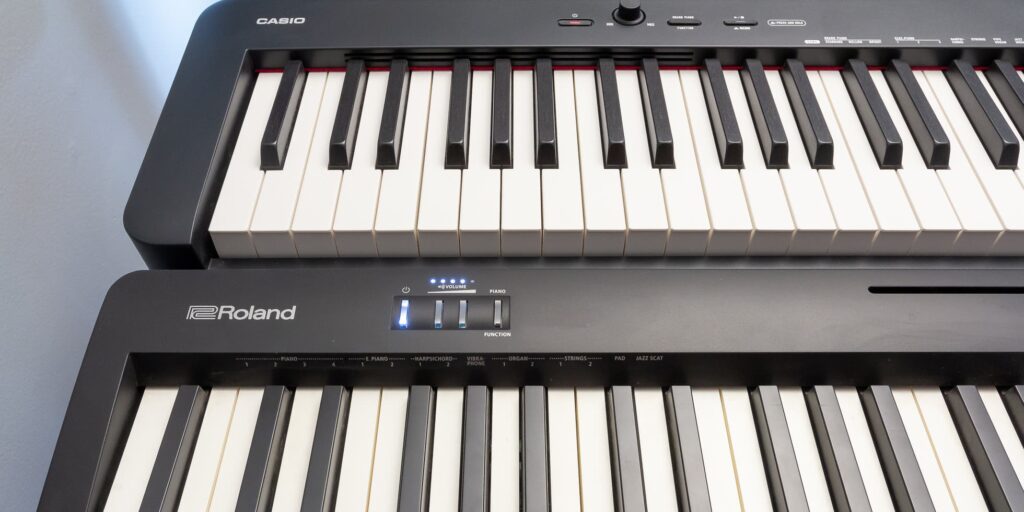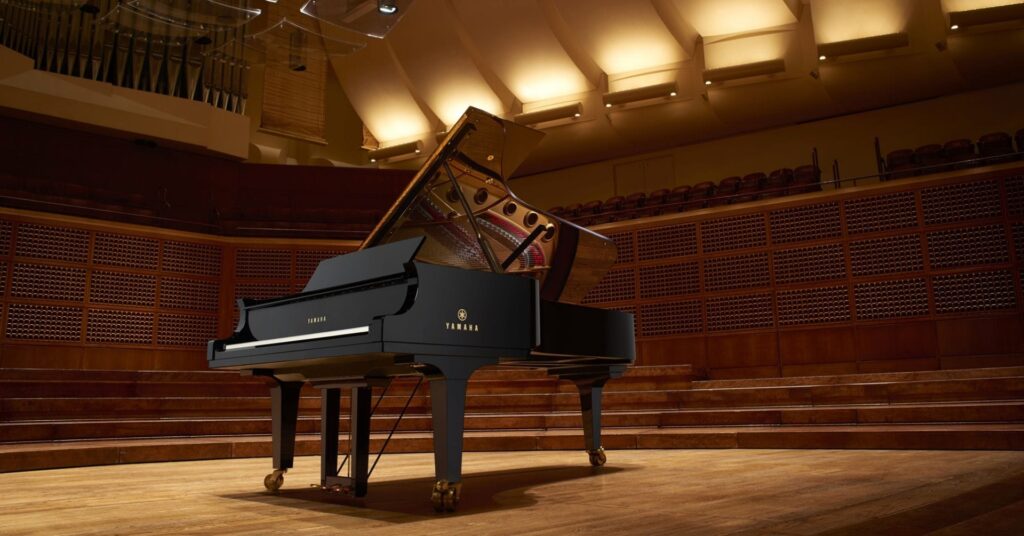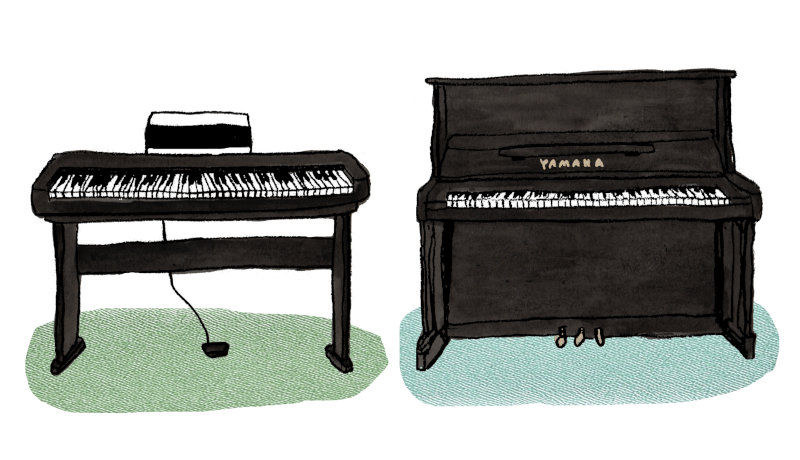People often ask whether they need to purchase an acoustic piano for their beginning pianist or whether a digital piano will be sufficient. There is no definite answer to this question as it really depends on each families’ needs, budget and long-term goals.
Why consider a digital piano?
Keyboard technology has come a long way from its beginnings where early keyboards had unrealistic touch or sound. The advent of fast processors and years of development has made digital pianos a lot more authentic. While regular tuning and maintenance are not required, digital pianos can also have problems and repairs can be costly.
Reasons for choosing a digital piano:
- Space-constrained
- On a budget
- Requiring portability (constantly moving from place to place)
- Need to control the noise level (especially in a shared space such as apartments or townhouses)
- Connectivity to the computer for composition or e-learning attaching to computer-based learning)
Why consider an acoustic piano?
Acoustic still wins as the nuance of overtones and resonance is still unparalleled. The touch of the key and its feedback is still what it is (with the exception of the recently introduced Yamaha AvantGrand). A quality piano is a worthwhile investment. With regular maintenance and care, it will last a lifetime. Reasons for choosing an acoustic piano:
- Authentic sound and touch are important
- You have an appropriate place to keep the instrument and in stable environmental conditions
Maintenance is key to keeping a good acoustic instrument. Similar to owning an automobile, a piano requires yearly tuning (twice yearly in the first years as the soundboard is still young and requires maturing), and every 10-15 years it will require additional work on the felts and the hammer as determined by your piano technician.
What to look for in a digital piano

If you have decided that digital piano is what you want, consider these features:
- 88 keys: unless you never intend to move beyond Grade 6 RCM piano, don’t skim on buying an instrument with 61 keys.
- Weighted keys: starting out with a keyboard that has “touch sensitivity” is not enough. The additional weighted keys add to the realism of a real instrument and provide the student with the proper counterbalance when playing. A lighter touch from the inexpensive keyboards can make beginner playing easier, but it will make transitioning to a real piano much more difficult.
- 64 note polyphony or more: this shows that the digital piano has the computing power to handle more notes sounding at the same time. This impacts piano playing with a damper pedal.
- Ability to connect to a damper pedal: this will be required for students playing Grade 3 RCM piano (typically) or later. For younger kids, it is advised if the pedal can be removed that it should not be present (to avoid distraction).
There are features that piano buyers should avoid considering as part of your decision:
- Flashy lights or lots of buttons: this shows the instrument may be capable or have many features, but it can be a distraction to young kids. Remember, this is an instrument first, technology showcase second.
- Many instruments (or patches): having more is not better – in fact, more instruments will occupy precious sound sampling space (Instrument ROM) to make room for the 256+ instruments that it promises to have. Listen and compare the same piano piece with various digital pianos and see which one sounds the best for you.
A good entry-level digital piano costs between $500-$1000 before taxes. Don’t forget to buy a piano stand and piano bench (both between $50-$100 typical each). You should never use a desk chair to play the piano!
Also read our blog article on buying a digital piano.
What to look for in an acoustic piano

Buying a real piano can be a daunting exercise. Every piano is different as it is handmade and the wood may vary between different instruments. You need to test the piano you want to get. Look for the following when evaluating an acoustic piano:
- Keys feel even: press on each key and make sure it feels good and relatively even across keys. The lower (left) keys should feel heavier to strike than the highest (right) keys
- Test all keys: make sure the hammer strikes and it makes a sound
- Try half-press/full-press: the hammer does not strike until at least more than 50% is pressed, and there is a distinct point where the hammer is triggered (which should be even across all keys)
- Try all the pedals, and perform quarter, half and three-quarter presses
- Sustain (right) – when pressed, the notes sustain itself until the pedal is released, dampening all notes
- Practice (middle pedal, if applicable) – on upright pianos, this pedal should drop a felt between the hammers and mute the sound. Note that this is an on or off pedal and is not particularly important for most students. The actual use of this pedal on a grand piano (sostenuto) acts differently and is used for very advanced pieces.
- Soft (left) – when pressed on an upright, the distance of the hammer to string is shortened, effectively reducing the sound volume.
- Open the lid of the piano (top), and:
- Look to ensure no loose parts, broken strings, rust or split wood (front and back of piano)
- Very gently, brush across the hammers to ensure it is intact and stays in place with little flex. You may ask your piano salesperson to demonstrate to avoid liability.
What to ignore:
- The appearance of a piano finish: beauty is only skin deep. The playability, sound and feel are more important. Unlike a car, it is an indoor instrument. If there are no termites or rotting wood, the finish is only a finish.
- Age: an overhauled piano by a reputable dealer or technician brings similar age to a broken-in piano, and likely with more predictability. As long as a piano is not abused, it can be enjoyed for many years. Do not ever discount an older piano if it is well maintained.
If you are not comfortable deciding on a piano, bring someone who can play with you. Do not feel intimated and play as much as you need on them. Lastly, when you buy the piano, ensure you record the serial number of the instrument you buy.
A good used acoustic piano will cost $2000-4000. New pianos will cost between $3000 to $10,000. Acoustic piano costs more based on the height (taller = larger soundboards), the hammer action and the felt used to wrap the hammer.
Starting points
- Digital pianos:
- Casio Privia or CELVIANO digital pianos
- Roland Stylish Series digital pianos
- Korg digital pianos
- Yamaha P-series or Arius digital pianos
- Kawai digital pianos
- Acoustic upright pianos:

